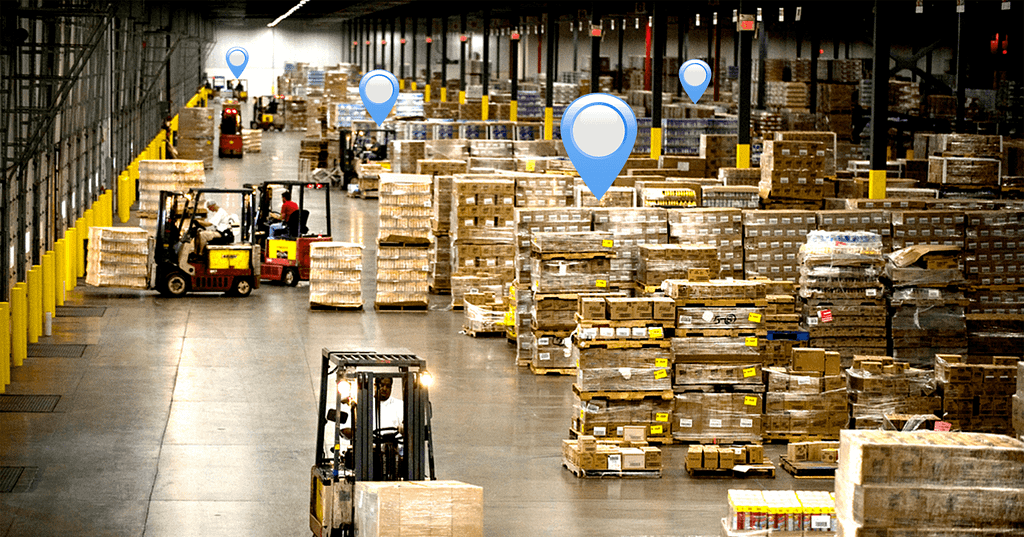In the world of today, managing assets efficiently has become a critical aspect for businesses across various industries. Traditional asset management methods often fall short in providing real-time insights and comprehensive data that modern enterprises require.
This is where the Internet of Things (IoT) and asset trackers come into play, transforming the way organizations monitor and manage their equipment. In this article, we will delve into the world of equipment trackers, exploring the synergy between IoT and asset management and the myriad benefits these technologies offer.
Understanding equipment trackers
Equipment trackers, often referred to as asset trackers, are innovative devices that leverage IoT technology to monitor and manage physical assets. These assets can range from vehicles, machinery, and tools to high-value items such as medical equipment or sensitive data storage devices. The primary function of equipment trackers is to collect and transmit real-time data, providing stakeholders with a comprehensive view of asset location, status, and usage patterns.
IoT and asset management: a perfect union
The Internet of Things (IoT) refers to the network of interconnected devices that communicate and exchange data seamlessly. When applied to asset management, IoT empowers organizations to gather valuable insights, automate processes, and enhance decision-making. The integration of IoT with equipment trackers offers a robust solution for businesses seeking to optimize their asset management strategies.
Real-time visibility
One of the key advantages of equipment trackers powered by IoT is the ability to provide real-time visibility into the location and condition of assets. Traditional asset management methods often rely on periodic manual checks or scheduled reports, resulting in delayed information. With IoT-enabled trackers, organizations can access live data, enabling them to make informed decisions promptly.

For example, in the logistics industry, real-time visibility into the location and status of shipments is crucial for efficient supply chain management. Equipment trackers equipped with GPS and sensors can transmit data on a shipment’s location, temperature, and condition in real-time, allowing businesses to proactively address issues such as delays or environmental variations.
Enhanced security
Security is a paramount concern for businesses managing valuable assets. Equipment trackers bolster security measures by providing continuous monitoring and instant alerts in case of unauthorized access or movement. In the event of theft, organizations can use the data collected by the trackers to facilitate the recovery of stolen assets.
Moreover, asset trackers contribute to preventive security measures. For instance, if a construction company has heavy machinery stationed at a remote site, IoT-enabled trackers can detect any unusual activity or unauthorized usage, triggering immediate alerts to the concerned authorities.
Predictive maintenance
IoT-enabled equipment trackers play a pivotal role in predictive maintenance, a proactive approach to asset management that aims to identify potential issues before they lead to equipment failure. By monitoring equipment in real-time and analyzing data such as usage patterns, operating conditions, and performance metrics, organizations can predict when maintenance is required and schedule it at optimal times to minimize downtime.
In the manufacturing sector, for instance, IoT-powered asset trackers attached to production machinery can collect data on factors like temperature, vibration, and energy consumption. This data is then analyzed using machine learning algorithms to predict when a machine is likely to experience a failure, enabling maintenance teams to intervene before a breakdown occurs.
Improved operational efficiency
Efficiency is a cornerstone of successful businesses, and IoT-equipped asset trackers contribute significantly to operational streamlining. By automating data collection and analysis processes, organizations can eliminate manual tracking efforts and reduce the risk of errors associated with human intervention.

In the agriculture industry, for example, equipment trackers can be deployed on tractors and other farming machinery. These trackers not only provide real-time location data but also collect information on fuel consumption, soil conditions, and machinery performance. Analyzing this data allows farmers to optimize their operations, plan routes more efficiently, and enhance overall productivity.
Cost savings
Effective asset management translates into cost savings for businesses. IoT-enabled equipment trackers contribute to cost reduction through various mechanisms, including improved operational efficiency, preventive maintenance, and optimized resource allocation.
Consider a fleet management scenario where vehicles are equipped with IoT-based trackers. By monitoring fuel consumption, route efficiency, and driver behavior, organizations can identify areas for improvement. This data-driven approach allows businesses to implement fuel-saving measures, reduce maintenance costs, and extend the lifespan of their vehicles.
Challenges and considerations of equipment trackers
While the integration of IoT and equipment trackers offers immense benefits, organizations must be aware of the challenges associated with these technologies. Security concerns, data privacy issues, and the initial costs of implementation are factors that require careful consideration.
Security and privacy
As organizations rely on IoT devices to collect and transmit sensitive data, ensuring the security and privacy of that information becomes paramount. The interconnected nature of IoT increases the attack surface for potential cyber threats. Therefore, robust security measures, such as encryption protocols, secure communication channels, and regular software updates, are essential to safeguard the integrity of the data collected by equipment trackers.
Moreover, organizations must comply with data protection regulations to prevent unauthorized access and ensure the privacy of individuals whose data may be collected. Implementing a comprehensive security strategy that encompasses both hardware and software components is imperative for successful IoT and equipment tracker deployments.
Initial implementation costs
The upfront costs associated with implementing IoT-enabled equipment trackers can be a barrier for some organizations – this includes the cost of purchasing the devices, integrating them with existing systems, and training personnel to use the new technology effectively. However, it’s essential to view these costs as an investment with a significant return on investment (ROI) potential over time.
To address cost concerns, organizations can explore scalable solutions and phased implementations. Starting with a pilot program for a specific set of assets allows businesses to assess the benefits before committing to a full-scale deployment. Additionally, partnerships with IoT solution providers and leveraging cloud-based services can help organizations manage costs effectively.
Data management and integration
The volume of data generated by IoT-enabled equipment trackers can be overwhelming, and organizations must have robust data management and integration strategies in place. Effective data analysis requires the integration of IoT-generated data with existing enterprise systems, such as Enterprise Resource Planning (ERP) and Customer Relationship Management (CRM) platforms.
To address this challenge, organizations should invest in scalable and flexible data management solutions. Cloud-based platforms offer the advantage of scalable storage and computing resources, enabling businesses to handle large volumes of data efficiently. Additionally, implementing data analytics tools can help organizations derive actionable insights from the wealth of information collected by equipment trackers.
Case studies: Real-world applications of equipment trackers and IoT
To illustrate the impact of equipment trackers and IoT on various industries, let’s explore a few real-world case studies.
Fleet management in transportation
A leading logistics company implemented IoT-enabled equipment trackers on its fleet of trucks to enhance overall efficiency and reduce operational costs. The trackers, equipped with GPS, temperature sensors, and fuel monitoring capabilities, provided real-time visibility into the location and status of each vehicle.

The organization leveraged the data collected by the trackers to optimize route planning, leading to a significant reduction in fuel consumption and transportation times. Additionally, the temperature sensors helped ensure the integrity of temperature-sensitive cargo, preventing spoilage and minimizing losses.
Construction site management
In the construction industry, where heavy machinery is deployed in dynamic and often remote environments, a construction company adopted IoT-powered equipment trackers to monitor its assets. The trackers provided real-time location data, usage patterns, and equipment status.
By analyzing this data, the construction company was able to schedule preventive maintenance effectively, reducing unplanned downtime and extending the lifespan of its machinery. The trackers also contributed to enhanced security by sending instant alerts in case of unauthorized access or movement of equipment outside designated areas.
Healthcare equipment tracking
A hospital implemented equipment trackers on critical medical devices, such as ventilators, infusion pumps, and diagnostic equipment. The trackers, integrated with the hospital’s network, provided real-time information on the location and status of each device.
This real-time visibility enabled hospital staff to locate and retrieve equipment quickly, reducing response times in emergencies. Moreover, the predictive maintenance capabilities of the trackers helped prevent equipment failures, ensuring the availability of essential medical devices when needed most.
Asset management with IoT-powered equipment trackers
The synergy between IoT and equipment trackers is reshaping the landscape of asset management across industries. Organizations that embrace these technologies gain a competitive edge by unlocking real-time visibility, enhancing security measures, and optimizing operational efficiency.
While challenges such as security concerns and initial implementation costs exist, the long-term benefits in terms of cost savings, improved decision-making, and enhanced productivity outweigh the challenges.

As technology continues to advance, the capabilities of equipment trackers and IoT will evolve, offering even more sophisticated solutions for asset management. The journey towards a more connected and efficient future is underway, and businesses that harness the power of equipment trackers and IoT are poised to thrive in the ever-changing landscape of modern industry.
As you embark on the transformative journey of integrating IoT-powered equipment trackers into your business, consider partnering with Datanet IoT. Our comprehensive IoT tracking solution is designed to elevate your asset management strategy, providing you with the tools and expertise needed for unparalleled success!
At Datanet IoT, we are dedicated to delivering tangible results for your business. Get in touch today to be a part of the future.




